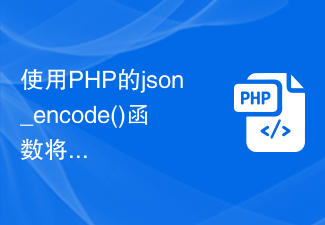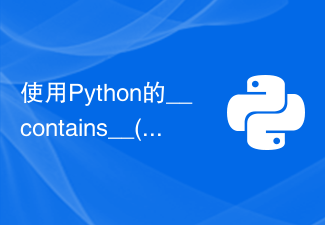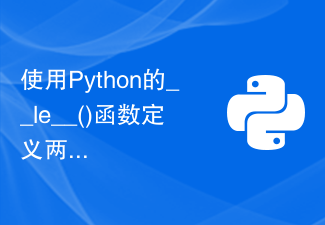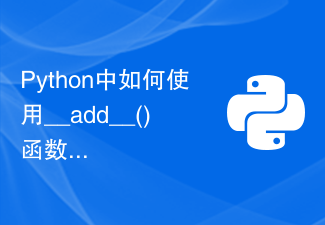 Java
Java javaTutorial
javaTutorial Analyze the differences between heap and stack in Java and their application scenarios
Analyze the differences between heap and stack in Java and their application scenarios
The difference between Java heap and stack and analysis of application scenarios require specific code examples
In Java programs, heap and stack are two commonly used data structures. Assume different roles and functions in memory. Understanding the difference between heap and stack is crucial to writing efficient Java programs.
First, let’s take a look at the Java heap. The heap is an area used to store objects. All objects created in the program are stored in the heap. The heap is where memory is dynamically allocated and released while the program is running. It is not subject to any restrictions and can automatically expand or shrink as needed. Therefore, the heap is very convenient for managing dynamic data structures. Objects stored in the heap can be accessed by all threads, so the heap is shared by threads.
Let's look at a specific example, assuming we need to create an object of the student class and store it in the heap:
public class Student {
private String name;
private int age;
public Student(String name, int age) {
this.name = name;
this.age = age;
}
// 省略其他代码
public static void main(String[] args) {
Student student = new Student("John", 20);
}
}In the above code, we create an object named " student" student object and stored in the heap. The characteristic of the heap is that it can store a large number of objects and these objects can be accessed from any location.
Next, let’s take a look at the Java stack. The stack is a data structure used to store local variables and method calls. Each thread creates an independent stack when running to store local variables and temporary data during method execution. The stack is a lightweight data structure that is automatically released after the method is executed.
The following is an example showing the process of creating and using local variables in the stack:
public class StackExample {
public static void main(String[] args) {
int a = 10;
int b = 20;
int sum = calculateSum(a, b);
System.out.println("Sum: " + sum);
}
public static int calculateSum(int a, int b) {
int sum = a + b;
return sum;
}
}In the above code, we create local variables a and b in the stack, and Store their sum in the sum variable. After the method is executed, these variables created on the stack will be automatically released.
Understanding the difference between heap and stack is very important for correct use of memory. The heap is suitable for storing a large number of dynamic objects, but due to the need to dynamically allocate and release memory, the performance of the heap is relatively low. The stack is suitable for storing small local variables and temporary data. Due to the characteristics of the stack, its performance is relatively high. Therefore, in order to write efficient Java programs, we should choose appropriate data structures based on specific needs.
To sum up, the heap and stack play different roles in Java. The heap is used to store objects, while the stack is used to store local variables and method calls. Understanding the differences between heap and stack and their application scenarios can help us write more efficient Java programs.
Reference:
- Oracle official documentation - https://docs.oracle.com/en/java/javase/14/language/java-se-14.pdf
The above is the detailed content of Analyze the differences between heap and stack in Java and their application scenarios. For more information, please follow other related articles on the PHP Chinese website!
 使用PHP的json_encode()函数将数组或对象转换为JSON字符串Nov 03, 2023 pm 03:30 PM
使用PHP的json_encode()函数将数组或对象转换为JSON字符串Nov 03, 2023 pm 03:30 PMJSON(JavaScriptObjectNotation)是一种轻量级的数据交换格式,已经成为Web应用程序之间数据交换的常用格式。PHP的json_encode()函数可以将数组或对象转换为JSON字符串。本文将介绍如何使用PHP的json_encode()函数,包括语法、参数、返回值以及具体的示例。语法json_encode()函数的语法如下:st
 源码探秘:Python 中对象是如何被调用的?May 11, 2023 am 11:46 AM
源码探秘:Python 中对象是如何被调用的?May 11, 2023 am 11:46 AM楔子我们知道对象被创建,主要有两种方式,一种是通过Python/CAPI,另一种是通过调用类型对象。对于内置类型的实例对象而言,这两种方式都是支持的,比如列表,我们即可以通过[]创建,也可以通过list(),前者是Python/CAPI,后者是调用类型对象。但对于自定义类的实例对象而言,我们只能通过调用类型对象的方式来创建。而一个对象如果可以被调用,那么这个对象就是callable,否则就不是callable。而决定一个对象是不是callable,就取决于其对应的类型对象中是否定义了某个方法。如
 使用Python的__contains__()函数定义对象的包含操作Aug 22, 2023 pm 04:23 PM
使用Python的__contains__()函数定义对象的包含操作Aug 22, 2023 pm 04:23 PM使用Python的__contains__()函数定义对象的包含操作Python是一种简洁而强大的编程语言,提供了许多强大的功能来处理各种类型的数据。其中之一是通过定义__contains__()函数来实现对象的包含操作。本文将介绍如何使用__contains__()函数来定义对象的包含操作,并且给出一些示例代码。__contains__()函数是Pytho
 使用Python的__le__()函数定义两个对象的小于等于比较Aug 21, 2023 pm 09:29 PM
使用Python的__le__()函数定义两个对象的小于等于比较Aug 21, 2023 pm 09:29 PM标题:使用Python的__le__()函数定义两个对象的小于等于比较在Python中,我们可以通过使用特殊方法来定义对象之间的比较操作。其中之一就是__le__()函数,它用于定义小于等于比较。__le__()函数是Python中的一个魔法方法,并且是一种用于实现“小于等于”操作的特殊函数。当我们使用小于等于运算符(<=)比较两个对象时,Python
 详解Javascript对象的5种循环遍历方法Aug 04, 2022 pm 05:28 PM
详解Javascript对象的5种循环遍历方法Aug 04, 2022 pm 05:28 PMJavascript对象如何循环遍历?下面本篇文章给大家详细介绍5种JS对象遍历方法,并浅显对比一下这5种方法,希望对大家有所帮助!
 Python中如何使用getattr()函数获取对象的属性值Aug 22, 2023 pm 03:00 PM
Python中如何使用getattr()函数获取对象的属性值Aug 22, 2023 pm 03:00 PMPython中如何使用getattr()函数获取对象的属性值在Python编程中,我们经常会遇到需要获取对象属性值的情况。Python提供了一个内置函数getattr()来帮助我们实现这个目标。getattr()函数允许我们通过传递对象和属性名称作为参数来获取该对象的属性值。本文将详细介绍getattr()函数的用法,并提供实际的代码示例,以便更好地理解。g
 使用Python的isinstance()函数判断对象是否属于某个类Aug 22, 2023 am 11:52 AM
使用Python的isinstance()函数判断对象是否属于某个类Aug 22, 2023 am 11:52 AM使用Python的isinstance()函数判断对象是否属于某个类在Python中,我们经常需要判断一个对象是否属于某个特定的类。为了方便地进行类别判断,Python提供了一个内置函数isinstance()。本文将介绍isinstance()函数的用法,并提供代码示例。isinstance()函数可以判断一个对象是否属于指定的类或类的派生类。它的语法如下
 Python中如何使用__add__()函数定义两个对象的加法运算Aug 22, 2023 am 11:12 AM
Python中如何使用__add__()函数定义两个对象的加法运算Aug 22, 2023 am 11:12 AMPython中如何使用__add__()函数定义两个对象的加法运算在Python中,可以通过重载运算符来为自定义的对象添加对应的运算功能。__add__()函数是用于定义两个对象的加法运算的特殊方法之一。在本文中,我们将学习如何使用__add__()函数来实现对象的加法运算。在Python中,可以通过定义一个类来创建自定义的对象。假设我们有一个叫做"Vect


Hot AI Tools

Undresser.AI Undress
AI-powered app for creating realistic nude photos

AI Clothes Remover
Online AI tool for removing clothes from photos.

Undress AI Tool
Undress images for free

Clothoff.io
AI clothes remover

AI Hentai Generator
Generate AI Hentai for free.

Hot Article

Hot Tools

Safe Exam Browser
Safe Exam Browser is a secure browser environment for taking online exams securely. This software turns any computer into a secure workstation. It controls access to any utility and prevents students from using unauthorized resources.

PhpStorm Mac version
The latest (2018.2.1) professional PHP integrated development tool

SublimeText3 Chinese version
Chinese version, very easy to use

MinGW - Minimalist GNU for Windows
This project is in the process of being migrated to osdn.net/projects/mingw, you can continue to follow us there. MinGW: A native Windows port of the GNU Compiler Collection (GCC), freely distributable import libraries and header files for building native Windows applications; includes extensions to the MSVC runtime to support C99 functionality. All MinGW software can run on 64-bit Windows platforms.

Dreamweaver CS6
Visual web development tools





